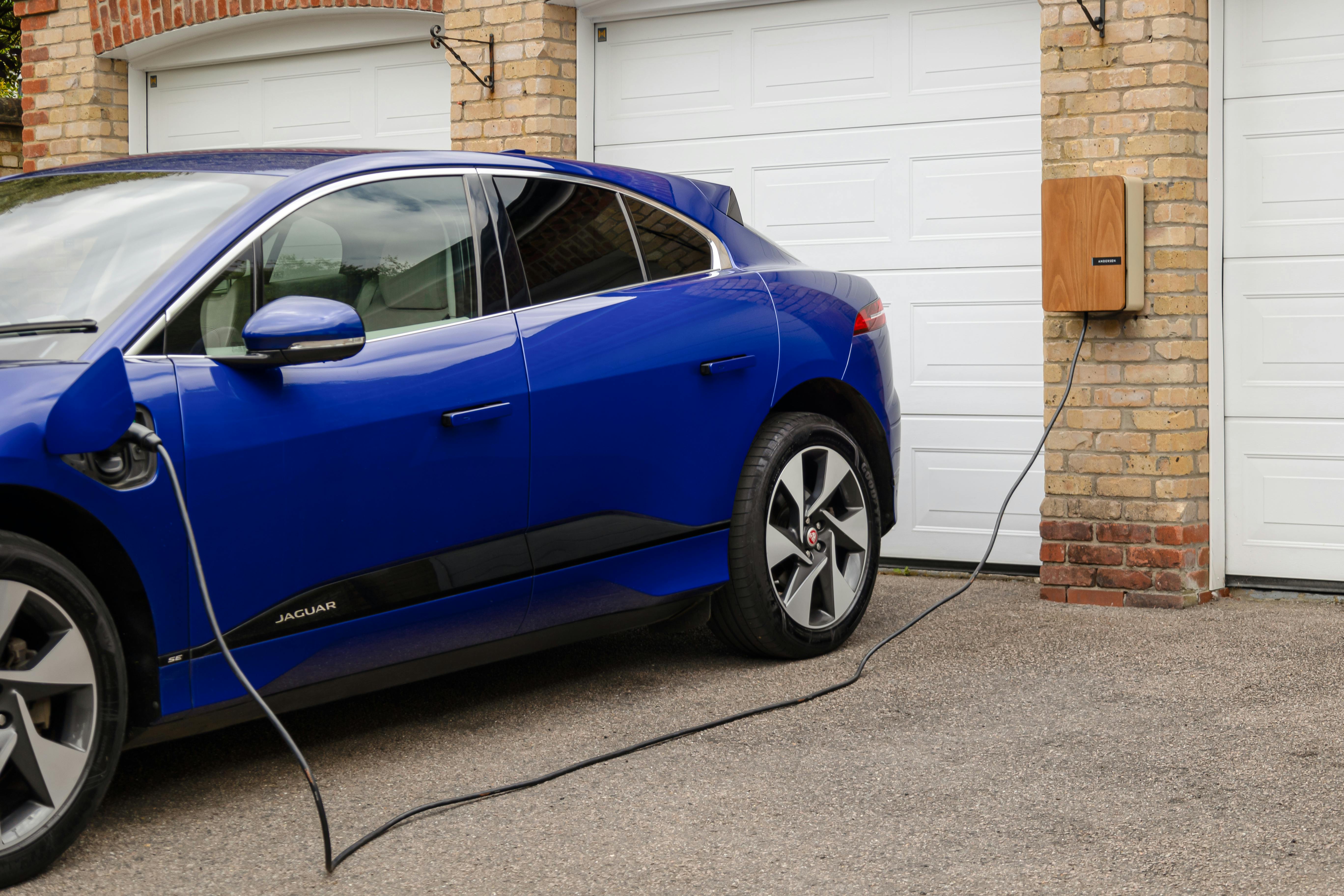The automotive landscape is undergoing a revolutionary transformation, with electric vehicles (EVs) rapidly moving from niche status to mainstream contenders. As more drivers consider making the switch, a fundamental question arises: how do these modern marvels truly differ from the traditional gasoline-powered cars we've known for over a century?
The Fundamental Shift: Propulsion Systems
Electric vs. Internal Combustion
At the core of an EV's identity is its powertrain. Unlike traditional cars that rely on an internal combustion engine (ICE) to burn fossil fuels, electric vehicles are powered by one or more electric motors.
These motors draw energy from a large battery pack, converting electrical energy directly into mechanical motion to drive the wheels. This fundamental difference dictates nearly every other aspect of an EV's design and operation.

Photo by Erik Mclean on Pexels
Battery Technology and Range
The battery is the heart of any EV, a sophisticated component often made up of thousands of lithium-ion cells, similar to those found in smartphones but on a much larger scale. The capacity of this battery dictates the vehicle's range – how far it can travel on a single charge.
Advancements in battery technology are continually pushing the boundaries of range and charging speed, making EVs more practical for daily use and longer journeys. Understanding the role of the battery is key to appreciating EV performance. Advanced Battery Technologies for Electric Vehicles
Performance and Driving Experience
Instant Torque and Smooth Acceleration
One of the most immediate and noticeable differences when driving an EV is the acceleration. Electric motors deliver instant torque from a standstill, meaning there's no lag as with an ICE vehicle waiting for RPMs to build.
This results in incredibly smooth, responsive, and often surprisingly rapid acceleration. The absence of gear changes further contributes to a seamless driving sensation.
Quiet Operation
Another hallmark of electric vehicles is their almost silent operation. Without the mechanical noise of an engine, exhaust, or transmission, the cabin of an EV offers a remarkably quiet and serene environment.
This tranquility not only enhances comfort but also allows passengers to better appreciate the car's sound system or simply enjoy a calmer journey. The only sounds typically heard are tire noise and wind resistance.
Regenerative Braking
EVs feature regenerative braking, a smart system that recaptures kinetic energy usually lost as heat during deceleration. When the driver lifts off the accelerator or presses the brake, the electric motor acts as a generator, feeding energy back into the battery pack.
This not only increases efficiency and extends range but also reduces wear on traditional brake pads, potentially lowering maintenance costs over time.
Fueling and Charging Infrastructure
Recharging vs. Refueling
The concept of "fueling" an EV is fundamentally different from a traditional car. Instead of visiting a gas station, EV owners "recharge" their vehicles, often at home overnight, much like charging a smartphone.
Public charging networks, including fast-charging stations, are also expanding rapidly, offering options for longer trips and on-the-go top-ups. This shift requires a new mindset for planning journeys.

Photo by Andersen EV on Pexels
Home Charging and Public Networks
Most EV owners opt for a dedicated home charging station (Level 2 charger) for convenience, allowing their car to charge while they sleep. Public charging options range from slower Level 2 chargers found at workplaces and shopping centers to rapid DC fast chargers capable of adding hundreds of miles of range in under an hour.
Understanding the types of chargers and their availability is crucial for prospective EV buyers. The infrastructure continues to evolve, making long-distance travel increasingly feasible. Understanding Renewable Energy: Solar
Environmental Impact
Emissions Reduction
Perhaps the most significant advantage of electric vehicles is their potential to drastically reduce tailpipe emissions. Since they don't burn fossil fuels, EVs produce zero emissions directly from the vehicle itself.
This contributes to cleaner air in urban areas and helps combat climate change. However, the overall environmental footprint depends on the source of electricity used to charge the vehicle.
"The true environmental benefit of an EV is maximized when its charging electricity comes from renewable sources like solar, wind, or hydropower."
Energy Source Considerations
While EVs have no tailpipe emissions, the electricity they consume must be generated somewhere. The environmental impact therefore shifts upstream to power plants.
As grids incorporate more renewable energy sources, the overall carbon footprint of EVs significantly decreases, making them an increasingly sustainable transportation option. This transition is a key part of the global clean energy movement.
Maintenance and Running Costs
Fewer Moving Parts
EVs typically have far fewer moving parts compared to an ICE vehicle. There's no complex engine with cylinders, valves, spark plugs, or an exhaust system to maintain. This simplification often translates to reduced maintenance requirements.
Owners can expect fewer oil changes (none, in fact), no transmission fluid flushes, and less wear on brake pads thanks to regenerative braking. This can lead to significant long-term savings.
Electricity vs. Gasoline Costs
The cost of "fueling" an EV with electricity is often considerably lower than buying gasoline, especially when charging at home during off-peak hours. While electricity rates vary, the per-mile cost of driving an EV is generally lower.
This economic advantage, combined with potential government incentives and lower maintenance, makes EVs an attractive option for budget-conscious drivers. EV Charging Cost Calculators
Technological Integration and Features
Smart Car Features
Modern EVs are often at the forefront of automotive technology, integrating advanced software, connectivity, and driver-assistance systems. Features like over-the-air updates, sophisticated infotainment systems, and advanced semi-autonomous driving capabilities are commonplace.
These vehicles are essentially computers on wheels, offering a highly connected and personalized driving experience. This level of integration often surpasses that of many traditional cars.
Over-the-Air Updates
A standout feature for many EVs is the ability to receive software updates wirelessly, much like a smartphone. These "over-the-air" (OTA) updates can introduce new features, improve performance, enhance safety, or even fix bugs without requiring a visit to a service center.
This ensures that an EV can evolve and improve throughout its lifespan, keeping it fresh and up-to-date with the latest advancements.
Conclusion: The Road Ahead is Electric
The journey from traditional gasoline-powered vehicles to electric vehicles represents more than just a change in fuel source; it's a paradigm shift in automotive engineering, driving experience, and environmental responsibility. From their silent, instant-torque propulsion and advanced battery systems to their simplified maintenance and sophisticated technology, EVs offer a distinctly different, often superior, proposition.
While the charging infrastructure continues to grow and battery technology rapidly advances, the core differences highlight a clear path towards a more sustainable and exhilarating future for transportation. As you consider your next vehicle, how do these fundamental distinctions between EVs and traditional cars influence your perspective on the future of driving?